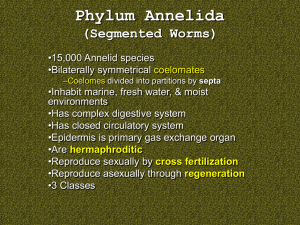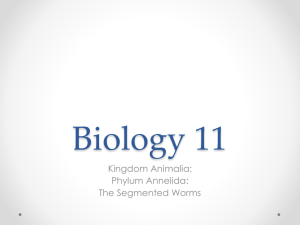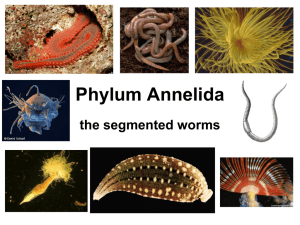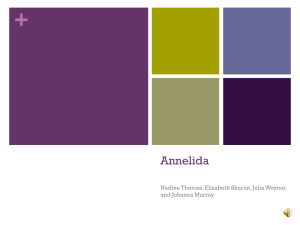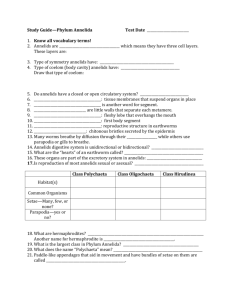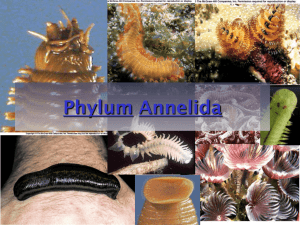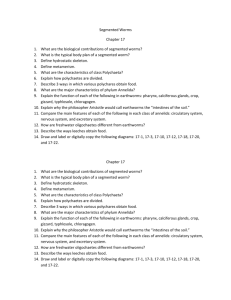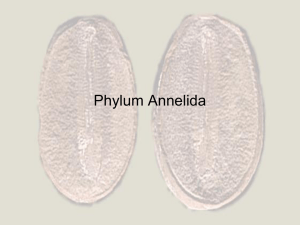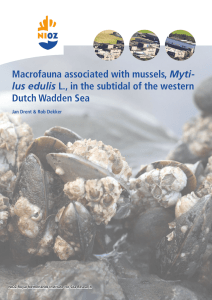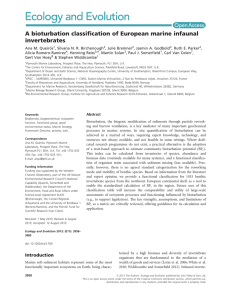Angiospermophyta & Annelida
advertisement
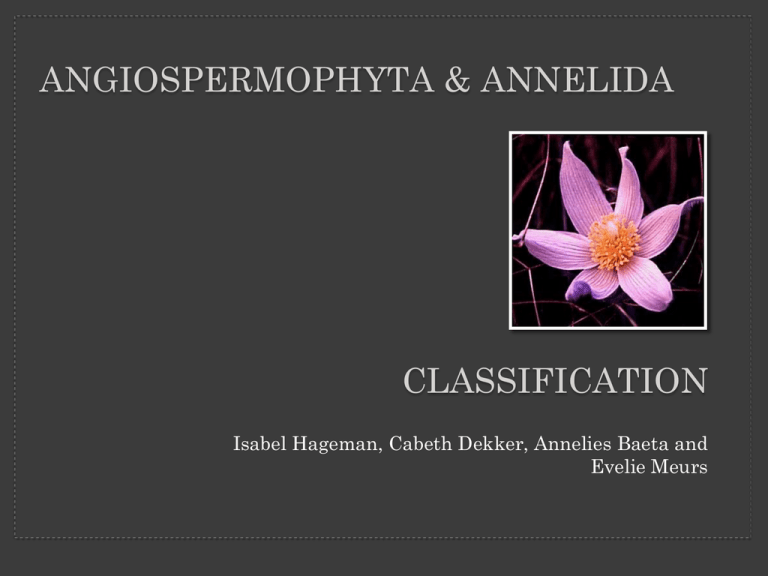
ANGIOSPERMOPHYTA & ANNELIDA CLASSIFICATION Isabel Hageman, Cabeth Dekker, Annelies Baeta and Evelie Meurs ANGIOSPERMOPHYTA Angiospermophyta Many different characteristics but most commonly: • Roots • Leafs • Stems Seeds are produced from ovules inside the ovaries. Stems of flowering plants that develop into shrubs and trees are woody. The fruits then develop from the ovaries and disperse the seeds. The ovaries are part of the flower. Angiospermophyta • Its vascular bundles (veins) are made of xylem and phloem • The leafs are waxy and usually arise as leaf blades and leaf stalks. They are relatively thin and are of dark green colour • The leafs are most commonly known to be around 20-50 cm but can also be up to 2 m in length • Leafs shoot from a rhizome that binds with the sediment in order to reproduce • A lot of flowers occur on a reproductive shoot similar to those of terrestrial grasses ANNELIDA Annelida Annelida Annelida can be considered as “segmented worms” They are classified into three categories: Oligochaeta Hirudinea Polychaeta Oligochaeta (earthworms) These live underground terrestrially in moist soil, and come to the surface after heavy rainfall. Hirudinea (leeches) These live near freshwater streams because of an inability to store water very well. Polychaeta (marine worms) These live in the ocean, filter feeding in order to survive. Oligochaeta (earthworms) • These include all types of earthworms • Members of this class have a reproductive structure • The head of these earthworms are degenerated with sensory structure which allows them to burry themselves more easily • Oligochaetes are monoecious (meaning they contain both male and female reproductive organs, hermaphrodites) Hirudinea (leeches) • Huridinea are also monoecious, but they switch between being male and female. They are never both at the same time • They suck blood out of they predators through their mouth, which has a surrounding anterior sucker • Most huridinea are predacious (meaning they live by preying on other animals) Polychaeta (marine worms) • These are the most structurally diverse of the annelids species and live only in water • They capture their prey with their tentacles • The fireworm specie has a poison-tipped setae (tentacles) as a defense mechanism • Unlike the oligochaeta and hirudinea, polychaetes are mostly dioecious (meaning they either contain male or female reproductive organs but never both)
